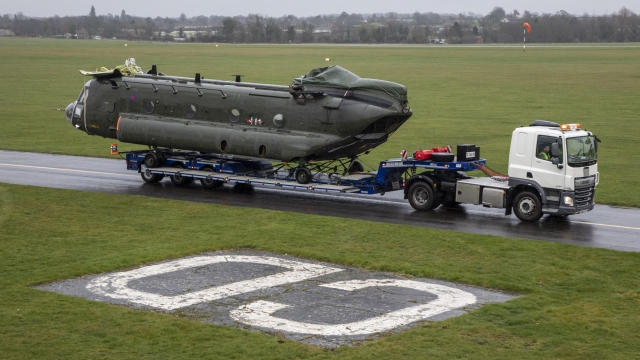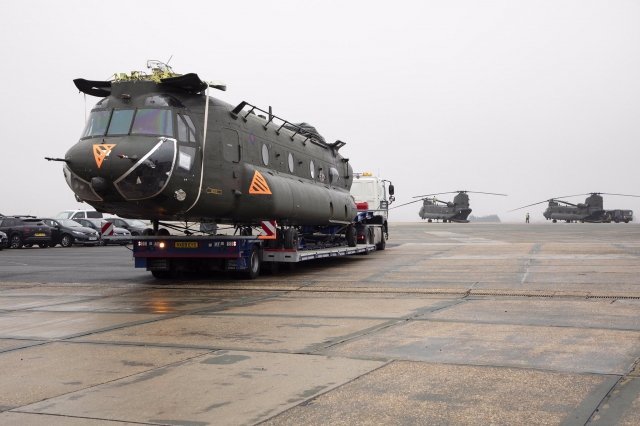One of the most famous Chinook helicopters ever flown by the Royal Air Force, ZA718 with code ‘BN’, has been preserved for the future.
The helicopter, well known by its code ‘Bravo November’, was loaded on a flatbed trailer at its former homebase RAF Odiham on 16 March 2022. It arrived at the final destination, the RAF Museum Cosford, one day later.
Chinook ZA718 is one of the original 30 aircraft ordered by the Royal Air Force in 1978 and was in service for 39 years. It has been upgraded several times in its history, now being designated as an HC6A airframe.
‘Bravo November’ was selected for preservation because of its impressive service record. It has seen action in every major operation involving the RAF in the helicopter's 39-year service life.
Since 1982 it has served in the Falkland Islands, Lebanon, Germany, Northern Ireland, Kurdistan, Iraq and Afghanistan. The aircraft has seen four of its pilots awarded the Distinguished Flying Cross for actions whilst in command of ‘Bravo November’.
 It first came to the attention of the general public for its survival of the Falklands Campaign. In April 1982 ZA718 was loaded, along with three other Chinooks, aboard the container ship MV Atlantic Conveyor bound for the Falkland Islands on Operation Corporate.
It first came to the attention of the general public for its survival of the Falklands Campaign. In April 1982 ZA718 was loaded, along with three other Chinooks, aboard the container ship MV Atlantic Conveyor bound for the Falkland Islands on Operation Corporate.
The Atlantic Conveyor was hit by an Exocet missile, destroying the vessel along with its cargo. Bravo November was on an airborne task at the time and managed to land on HMS Hermes, gaining the nickname ‘The Survivor’. It was the only serviceable heavy lift helicopter available to British forces involved in the hostilities.
The first of four Distinguished Flying Crosses earned by one of its pilots came for actions in the Falklands. The second DFC was awarded to a pilot of ZA718 while on duty in Iraq, while two pilots of the Chinook were awarded the DFC while flying in Afghanistan.
Photos: RAF


